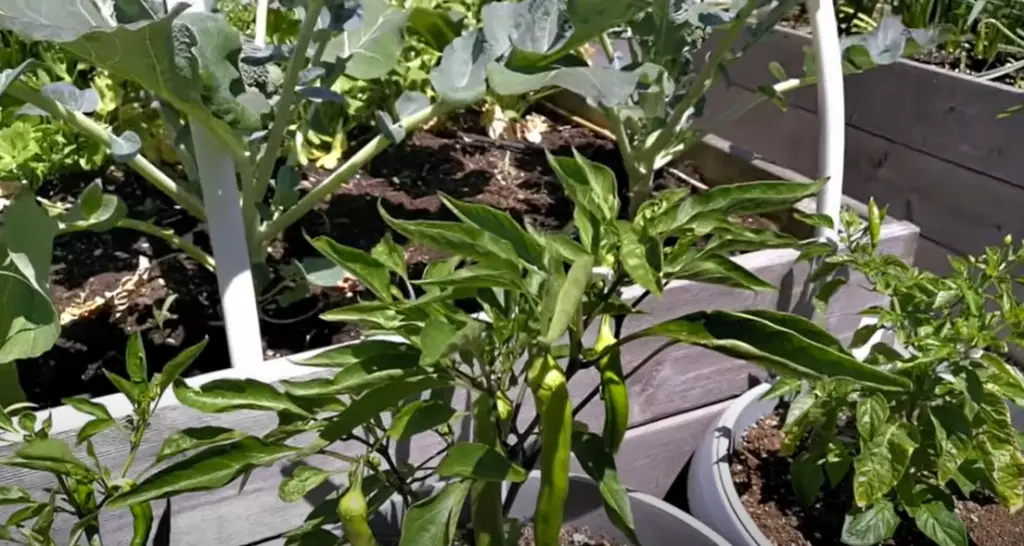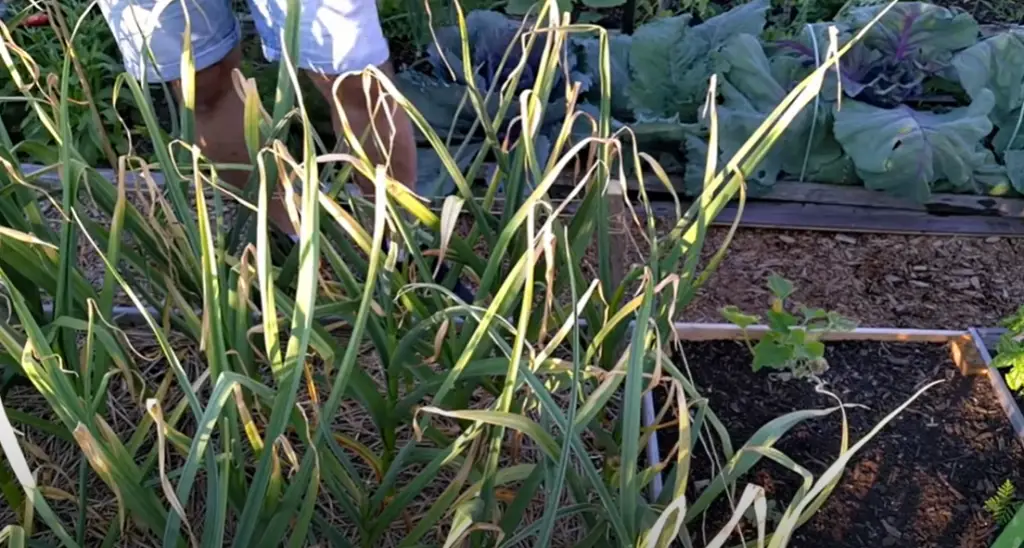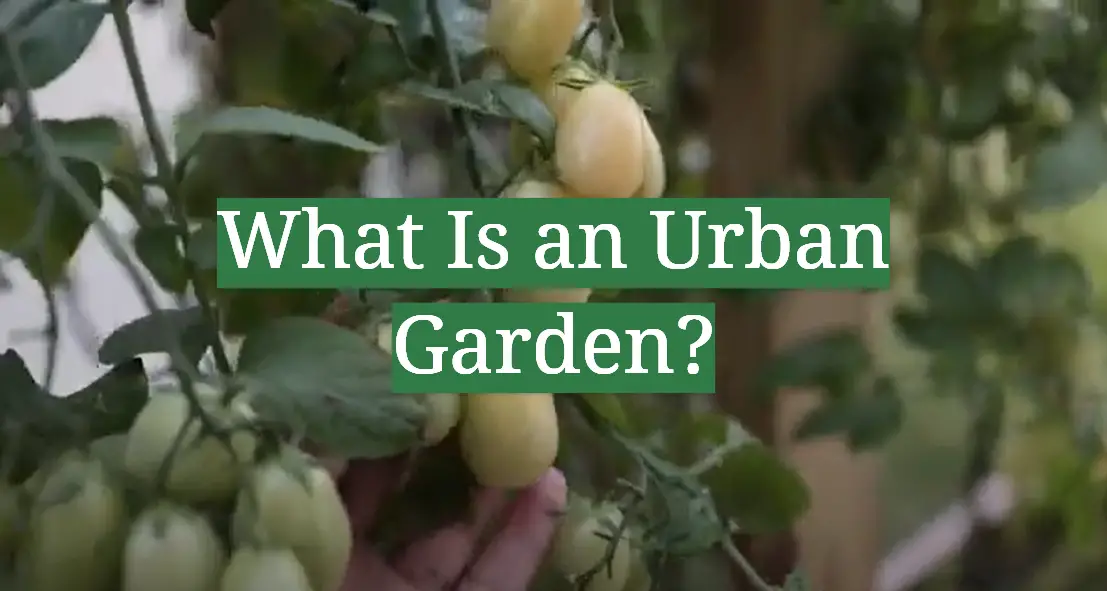What is an urban garden? This is a question that more and more people are asking as the trend of growing food in small spaces catches on. An urban garden can be defined as any garden that is located in or near a city. They can come in all shapes and sizes, from small raised beds on balconies to large community gardens occupying entire blocks. No matter how big or small, one thing is for sure: urban gardens are changing the way you think about gardening forever! This article will explore what an urban garden is and why it’s becoming so popular.
History of urban gardening
Urban gardening is a trend that has been growing in popularity since the 1970s. It began as a way for people living in cities to take control of their food sources and provide fresh, local produce for themselves and their neighbors. Today, urban gardening is an important part of many communities and can be used to foster community engagement, create green spaces in dense urban areas, promote environmental stewardship, and provide fresh fruits and vegetables for those who would otherwise have difficulty accessing them.
In the 1970s, urban gardening began to reemerge as a way for city dwellers to take control of their food sources and provide fresh produce in an increasingly industrialized society. Community-based organizations like the Los Angeles Food Bank and P-Patch Program in Seattle began sprouting up all over the country, offering land and resources for people to grow their food. Today, urban gardening is still very much alive, with more than 10 million households now growing some of their own food either at home or through community gardens. Urban farming has also become increasingly popular over the years, with many businesses such as urban farms, rooftop greenhouses, and aquaponic systems popping up all over the country.
Urban gardening has come a long way in the past few decades, and today it is used as an important tool to address problems of food insecurity and lack of access to fresh produce in many urban areas. It also serves as an important way to bring communities together and create green spaces in densely populated areas. Urban gardening continues to grow in popularity with each passing year, and it’s sure to have a bright future ahead [1]!

6 Benefits of Urban Gardening
Improves overall health and wellness
Urban gardening is a great way to improve your physical, mental, and emotional health. Planting and tending to a garden can be physically demanding, which helps you stay active and fit. Being outdoors in the sunlight for an extended period can also help boost your Vitamin D levels, improving your overall well-being. Additionally, gardening can provide stress relief from everyday life and allow you to appreciate the beauty of nature.
Creates Community
Gardening encourages people in urban areas to come together and work towards shared goals. Gardening provides an opportunity for social interaction that might not be available through other activities like going out or shopping. People with different backgrounds may use their unique skillsets to contribute to the community garden helping build bridges between neighbors.
Provides Nutritious Food
Urban gardening can provide access to fresh, organic food that might not be available in the local grocery store or market. Eating healthy can help reduce the risk of chronic diseases and improve overall health and wellness. Growing your own produce also allows you to control what goes into your food ensuring that it’s free from harmful chemicals or other preservatives found in processed foods.
Provides food security
Urban gardening also helps to create food security by reducing the dependency on large-scale, industrialized agriculture. By growing your food, you can reduce your food costs and be able to provide healthy meals for yourself and your family. Additionally, urban gardens help to increase access to healthy foods in underserved communities where fresh produce might not be available at all or is too expensive. Urban gardening provides an opportunity for people of all backgrounds to come together with a shared goal while providing nutritious food, improved health and wellness, and greater access to food security.

Reduces food waste
Urban gardening can help reduce the amount of food waste that is created in cities. Growing your own food eliminates the need for packaging and transportation, reducing the amount of waste that goes into landfills. Additionally, urban gardens can help divert food scraps from going to waste by using them as compost or fertilizer for plants. By utilizing urban spaces to grow food, people can be more conscious about how their actions affect the environment while creating a sustainable system that benefits everyone.
Preserves green spaces
Urban gardening can help preserve green spaces in cities by using existing land that would otherwise be converted into parking lots or buildings. Urban gardening also helps to increase access to nature, which is important for mental and physical health benefits. Furthermore, urban gardens can help create a microclimate, supporting biodiversity and preserving natural habitats for wildlife [2].
8 Types of Urban Gardening
Community gardens
Community gardens, sometimes called allotment gardens, are organized areas that are used to grow fruits and vegetables by members of the local community. They can be public or privately owned with plots that are rented out to individuals or shared amongst a group. Community gardens often have educational programs, workshops, and other activities associated with them.
Container gardening
Container gardening is a type of urban gardening that involves growing plants in containers such as pots, buckets, window boxes, or hanging baskets instead of directly planting them into the ground. Container gardening is popular for those who lack access to land for a traditional garden plot or prefer mobility and flexibility when it comes to their garden setup.
Rooftop/balcony gardening
Rooftop and balcony gardening can be incredibly rewarding. Growing fruits, vegetables, and herbs on a rooftop or balcony allows for full control of the growing environment and offers unique challenges due to limited space and exposure to sunlight. Many city dwellers are taking advantage of their available rooftops or balconies by utilizing creative design solutions such as vertical gardens or container gardens.

Hydroponic/aeroponic gardening
Hydroponics is a method of urban gardening that utilizes nutrient-rich water instead of soil in order to grow plants. This type of system does not require any soil, thus eliminating potential problems associated with traditional gardening such as weeds, pests, and disease. Hydroponic systems are often self-contained making them ideal for small spaces.
Aquaponic gardening
Aquaponics is a type of urban gardening that combines aquaculture (raising fish) and hydroponics in one integrated system. The fish produce waste which is then broken down by beneficial bacteria into nutrients that are absorbed by the plants. This type of system is incredibly efficient, utilizes very little water, and provides fresh food for both people and fish.
Edible landscaping
Edible landscaping refers to the practice of incorporating edible plants into a landscape design as ornamental elements. Common examples include fruit trees, berry bushes, herbs, vegetables, and other edible perennials in place of a traditional garden bed or lawn area. By creating an aesthetically pleasing landscape with edible plants, it encourages individuals to consume the fruits and vegetables they are growing in their yard!
Raised beds
Raised bed gardening is a type of urban gardening that utilizes elevated soil beds or containers to grow plants. This type of system offers the advantage of improved drainage, aeration, and accessibility compared to traditional in-ground gardens. This type of system also allows gardeners to customize the soil they are using based on the plants they are growing, thus providing optimal growing conditions for their crops.
Vertical gardening
Vertical gardening is a type of urban gardening that utilizes walls, trellises, and other structures to create vertical growing spaces for plants. This type of system allows gardeners to maximize their available space by taking advantage of the vertical environment and can be used to grow a wide variety of edible and ornamental plants [3].
Tips and Ideas for Sustainable Urban Gardening
- Start small: Don’t try to do too much too soon! It’s better to start with a manageable size garden and build from there.
- Use recycled materials where possible: Reuse items like old pallets or boxes for raised beds, grow pots, or trellises.
- Invest in quality soil: Good soil is the foundation of any successful garden – invest in high-quality organic soil that has been amended appropriately for your climate and weather conditions.
- Plant native species: Native species are best suited for local climates and require less maintenance than non-native plants, which makes them more sustainable options for the long term.
- Utilize vertical gardening techniques: Vertical gardens are great ways to maximize a small space. You can use trellises, hanging baskets, and other techniques to grow more in less space.
- Incorporate rainwater harvesting: Rain barrels or cisterns are an effective way for urban gardeners to store water for later use on their plants – this reduces the need for extra water from the municipal supply and helps conserve resources.
- Consider composting methods: Composting is an excellent way to reduce waste and nourish your soil with organic matter at the same time. Small-scale composters like tumblers or worms can be used effectively in urban settings.
- Practice crop rotation: Crop rotation ensures that soil fertility is maintained and diseases are kept at bay, which makes for healthier plants over time.
- Take advantage of natural sunlight: Maximizing the amount of natural sunlight you get can help reduce energy costs associated with lighting your garden. Consider utilizing south-facing windows or balconies to get the most light possible.
- Make use of companion planting: Planting certain species together can be beneficial, both in terms of increasing yields and providing pest control naturally – look into different combinations to find the best fit for your space.
- Research local ordinances: Familiarize yourself with any local laws or regulations that may affect your urban gardening plans before getting started!
- Get creative: Don’t be afraid to think outside the box when it comes to urban gardening. There are all sorts of creative ideas out there – from hanging gardens to container gardens and more – so get inspired and find something that works best for your space.
FAQ
What is meant by urban gardening?
Urban gardening is the practice of growing food in and around cities. It can be done on rooftops, balconies, patios, window boxes, alleyways, community gardens, or vacant lots. Urban gardens are often managed as part of a larger community effort to create healthier and more sustainable living spaces in cities. They provide fresh fruits and vegetables for local consumption as well as public green space for recreation and relaxation.
By utilizing available urban resources – sunlight, rainwater runoff, and nearby composting centers – urban gardeners strive to reduce their impact on the environment while providing nourishment for the people who live there. Additionally, urban gardens can act as a tool to bring communities together by providing an opportunity to connect with neighbors over shared interests and activities.

What are the benefits of urban gardening?
Urban gardening has numerous benefits for both individuals and communities. For one, growing food locally can help reduce dependence on imported produce by providing fresher, more nutrient-dense options for city dwellers. Urban gardens also improve air quality by absorbing pollutants, reducing noise levels due to their absorbent nature, and providing a calming green space that can be enjoyed by all residents. Additionally, urban gardens can act as an educational tool for children; teaching them about sustainable practices, nutrition, and how to grow their own food.
How do you start an urban garden?
Starting an urban garden can be a fun and rewarding project, but there are some important steps to consider beforehand. First, it’s important to find a suitable space for the garden – this could be a rooftop, balcony, patio, window box, alleyway, community garden plot or vacant lot. Once you have found the perfect spot, it’s time to decide what type of plants you would like to grow.
The best types of vegetables for urban gardens are those that don’t require too much space (such as lettuce and tomatoes), as well as herbs and flowers that attract beneficial insects. It is also helpful to start small and expand gradually over time. Next, check with your local government or housing authority about any regulations or restrictions for urban gardening in your area.
Useful Video: Urban Gardening Tips | Urban Vegetable Gardening for Beginners
Conclusion
Urban Gardens are a great way to bring people together in a community and help them connect with nature. They provide access to locally-grown fresh produce and can provide green space for city dwellers who may not have access to it elsewhere. Urban Gardening also helps reduce pollution, conserve resources, build communities, and promote healthier lifestyles. This is why Urban Gardening is becoming increasingly popular all over the world as more people realize its potential. By investing in urban gardening initiatives, cities can create sustainable living environments that benefit their citizens both now and in the future. With proper planning and dedication, an urban garden can become an integral part of any city’s landscape, providing beauty, health, and wellness benefits for years to come.
References:
- https://online.aurora.edu/history-of-urban-agriculture/
- https://www.freightfarms.com/blog/urban-farming-benefits
- https://www.tractorjunction.com/blog/what-is-urban-farming/










Leave a Reply
View Comments